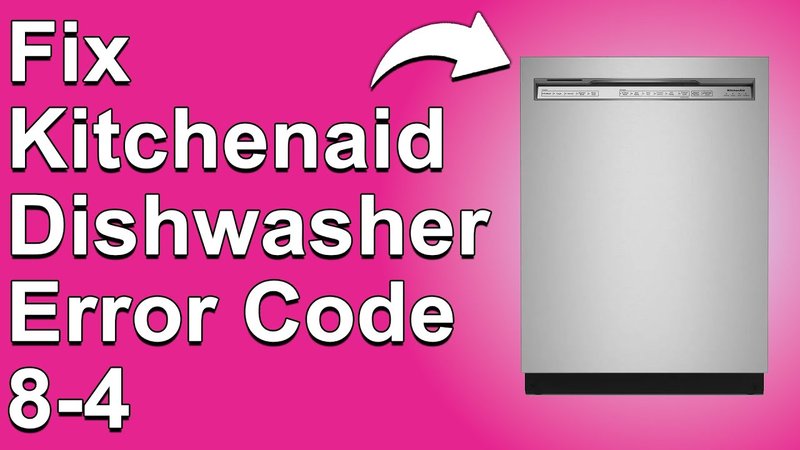
Imagine your dishwasher as a tiny robot chef that’s throwing a small tantrum because something isn’t quite right. When the error code UE appears, it’s essentially saying, “Hey, I’m having some trouble getting my job done smoothly.” It could be due to unevenly loaded dishes, a problem with the machine’s internal sensors, or even a malfunctioning component. But let’s dive deeper into what really happens if you decide to ignore this plea for help.
Understanding the Cause of the Error UE
When it comes to the UE error, think of it like your car’s check engine light. It’s a signal that something’s amiss, but it doesn’t necessarily pinpoint the exact issue. The roots of this error often lie in how the dishes are loaded. Overloading or unevenly distributing the dishes can cause the machine to wobble and fail to spin correctly. Just like a wobbly ceiling fan, your dishwasher needs balance to operate efficiently.
Additionally, faulty sensors inside the dishwasher may misread the conditions and cause this error to pop up. These sensors are like the dishwasher’s eyes and ears, helping it to detect the load’s distribution and how well it’s being cleaned. If these sensors are off, they might send false signals, triggering the UE code.
Finally, mechanical issues such as worn bearings or a faulty motor can also contribute to this error. This is akin to a bicycle with a loose chain; the machine can’t run smoothly if its components aren’t in top shape. If you don’t address these issues, they could lead to bigger problems down the road. So, it’s best to tend to them sooner rather than later.
Immediate Consequences of Ignoring the UE Error
You might wonder, “What’s the worst that could happen if I just let it be?” Let’s say you decide to ignore the UE error; your dishwasher will likely become less efficient over time. Imagine trying to power through a tough workout while wearing a backpack filled with bricks. It’s not impossible, but it sure makes the job harder and slows you down.
Ignoring the UE error might lead to inconsistent cleaning, meaning your dishes could come out with bits of food still clinging on. This not only defeats the purpose of having a dishwasher in the first place but can be frustrating because nobody likes to find crusty dishes when they expect sparkling clean ones.
Moreover, by letting the problem persist, you risk causing undue strain on your dishwasher’s motor and other internal components. This can lead to more serious breakdowns, resulting in costly repairs or, worst-case scenario, having to replace the appliance altogether. Just like ignoring a small leak can lead to a flooded basement, neglecting the UE error can drain your wallet in the long run.
Long-Term Effects of Not Addressing the Error
Over time, persistent errors like the UE code can compound into larger issues. Think of it like a snowball rolling down a hill—what starts small can grow into a much bigger problem if left unchecked. The first casualty is usually efficiency. Your dishwasher will consume more water and electricity, raising your utility bills.
Additionally, continuous operation with an imbalance can wear out crucial parts such as the bearings and motor. It’s similar to running a marathon with a pebble in your shoe; damage occurs because things just aren’t running smoothly. The more you ignore it, the more wear and tear the machine sustains, shortening its lifespan.
Moreover, a malfunctioning dishwasher could potentially lead to water leaks. No one wants a flooded kitchen, right? An undiagnosed problem might morph into a situation where water starts seeping out, damaging your flooring and causing additional repair costs. So, it’s crucial to address and fix the issue to avoid turning a simple fix into a major renovation project.
Solutions and Preventative Measures
So, what can you do about it? First, try redistributing the load in your dishwasher to ensure dishes are evenly spaced out. This is like rearranging furniture in a room to make sure everything fits just right without any wobbling. A balanced load helps the machine function properly.
If the error persists, check the sensors. These are like the brains of the dishwasher, and ensuring they’re not blocked or damaged can solve the problem. If you’re unsure, consult the user manual or reach out to a professional to help identify any potential issues. Remember, it’s better to get an expert to look at it than to guess and potentially make things worse.
As for preventative measures, regular maintenance is key. Cleaning the filters and periodically checking for wear and tear can keep your dishwasher running smoothly. Consider it like getting regular oil changes for your car; it keeps everything in good working order. By taking these steps, you’ll extend the life of your dishwasher and keep those pesky error codes at bay.
In conclusion, fixing the UE error in your Kitchenaid dishwasher is crucial for maintaining its efficiency and longevity. Addressing the issue promptly can save you from a cascade of more significant problems. So next time you see that UE code, remember: it’s your dishwasher’s way of asking for a little TLC.